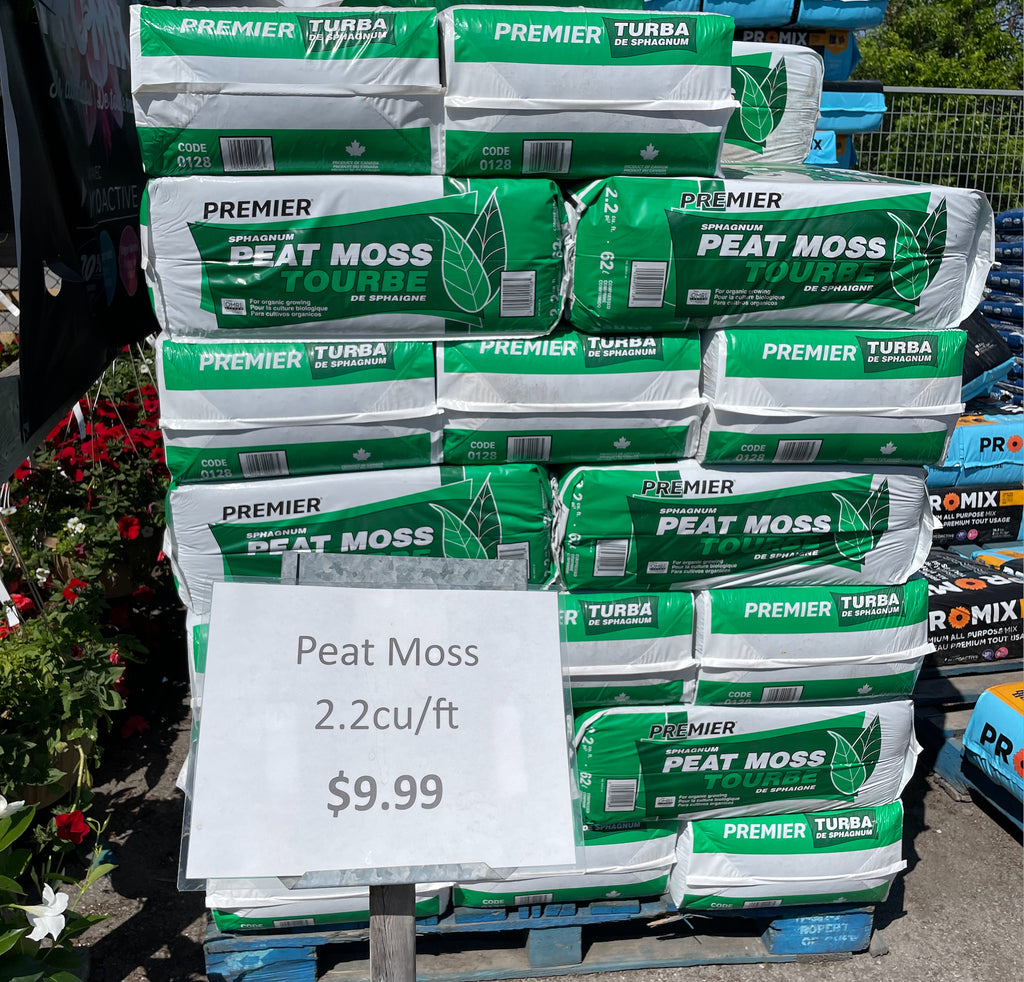Peat Moss is harvested from pristine bogs and wetlands in northern habitats.
It’s formed when moss and other organic material decomposes in bogs. This is a slow process as it happens without the presence of oxygen, and it takes several millennia for peat to form.
The end result is a dead fibrous material that is used through out the garden industry.
Pickup almost any top soil or potting mix product at Home Depot or other big box store, and it will likely contain peat moss.

Why is it so commonly used?
It’s a very cheap way of getting high quality dead organic material that:
- Helps retain water in your soil
- Provides aeration
- Is slightly acidic
- Will slowly decompose
These are all great things for soil health.
Why is harvesting peat moss so cheap?
Because you literally just go out to peat bog, dig it up, package it, and sell it. No processing required.


Most of peat moss in North America comes from northern Ontario and Quebec where obtaining permits for this type of harvesting costs next to nothing.
Why is it bad for the environment?
Besides the obvious (destruction of pristine peat bog habitats), peat bogs are huge carbon sinks. They store 30% of the world soil carbon. Ensuring soil carbon stays in peat bogs, where it doesn’t decompose, helps us limit climate change.
Extracting peat moss from peat bogs does the opposite. Not only do you need to harvest is (with fossil fuel using machinery) you then need to truck it a few thousand miles (with fossil fuel using trucks). At the end of this process, it ends up in your garden or lawn, where, with access to oxygen, the peat moss will decompose relatively quickly— releasing all of its carbon into the atmosphere.
What’s the alternative?
The alternative is to use a soil amendment that:
- Does not lead to the destruction of natural habitats
- Does not lead to the extraction of soil carbon
- Minimizes fossil fuel usage during transportation
- Leads to similar results
Insert, coconut coir.

Coconut choir is made from the outside fibres of a coconut.
It’s a by-product of the coconut industry (coconut oil, milk, flakes, water etc.) which processes over 55 billion coconuts a year. From which, there is over 2 million metric tons of coir fibre produced, of which, only 15% is only recovered today.

This means that using coconut coir as a soil amendment leads does not lead to the destruction of any natural habitat. It uses agriculture waste that would already be produced there regardless. (very efficient!)

Regarding the carbon, like most organic substance, coconut coir is about 50% carbon by dry weight.
Unlike peat moss harvesting, where we go and disturb carbon that would remain sequestered permanently if not for us extracting it, the carbon in coconut coir waste will be released into the air through decomposition regardless of whether it’s use as a soil amendment or not, so it leads to no additional carbon extraction.

Now for transport fossil fuel emission, which is the most contentious point, as most coconut coir comes from India, which of course, is much further away from North America than Northern Ontario. But the key piece of information here is that, the transportation of coconut coir from India happens with container ships, which are 80x more carbon efficient then trucks.
So for example, let’s assume peat moss travels 1000 miles to a Garden Centre in New York, most of that journey would by truck, which emits 23 kg of CO2 per ton of cargo per 1000 miles. While coconut coir from India would need to travel 14,000 miles to New York, most of that journey is via container ship, which emits 0.29 kg of CO2 per ton per 1000 miles, so the total CO2 emitted would be 4 kg, which is 82% less CO2 that would be needed to transport the peat moss.



Also, coconut coir is dried and compressed for transportation, and peat moss is only compressed, so there will be significant savings in transportation carbon cost from that as well.

And finally .. does it work just as well?
This is question is a little more complicated, as the right answer is that it depends, but in most cases, it performs just as well if not better. Here is a quick summary of the details.


So to summarize, in terms of sustainability, there is no question that coconut coir is more environmentally friendly than peat moss (don’t let the peat industry paid journalists convince you otherwise), and performs close enough to peat moss that, in my opinion, peat moss should never be used for home gardening or horticulture.
If you are reading this from Canada, and want to sign a petition to end new peat land creation, you can sign it here: https://www.wildernesscommittee.org/take-action/canada-needs-climate-review-new-peat-mines
If you’re interested about learning more about peat-free gardening and other more sustainable alternative to traditional gardening media, check out our peat free, climate friendly, Nutrient Blend.

